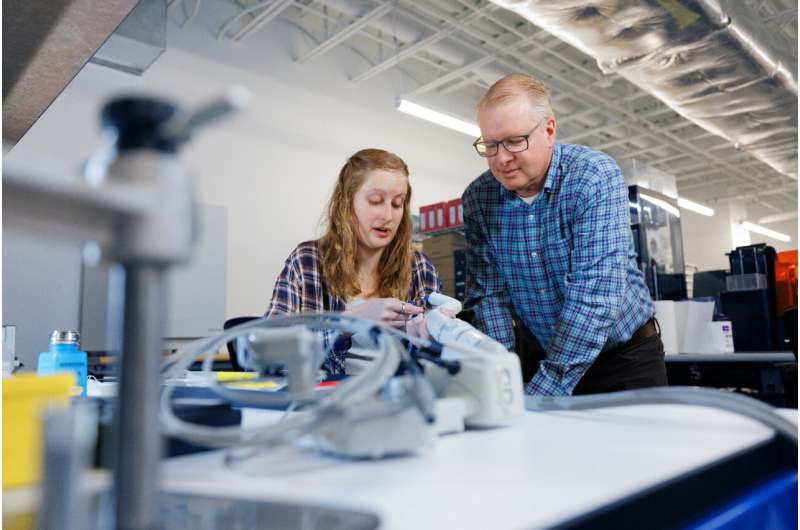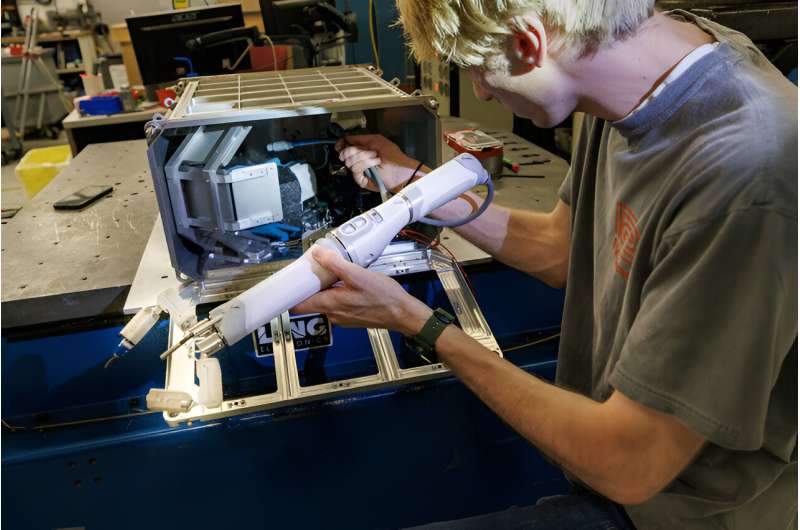
A surgeon's hands could stretch 250 miles above Earth, should an upcoming test of a miniaturized surgical robot aboard the International Space Station prove successful.
Invented by University of Nebraska-Lincoln's Shane Farritor and others, the robot blasted off Jan. 30 from Florida's Cape Canaveral Space Force Station aboard a Northrup Grumman Cygnus spacecraft bound for the orbital laboratory. The Cygnus was carried by a SpaceX Falcon 9 rocket.
It will be the first surgical robot on the space station and one of the first times remote surgery tasks have been tested in space.
The mission will help identify the next steps for creating surgical technologies suitable for long-distance space travel, but it also has implications for health care here on Earth.
"While space travel is exciting to think about, there is also an immediate need on Earth to help patients get the care they need," said Farritor, Lederer Professor of Engineering at the University of Nebraska-Lincoln and chief technology officer for Virtual Incision, a startup company he co-founded to bring the miniature robot to the commercial market.
According to a 2018 report published by the American College of Surgeons, about one-third of U.S. counties lack a surgeon, despite half of those counties being home to a hospital. Research from the University of Washington showed that availability of surgeons in rural areas declined by more than 29% between 2001 and 2019.
"Remote surgery has the potential to address these issues so patients can get the health care they need," Farritor said.
Farritor and his team have been preparing a space-worthy version of their robot, named MIRA, for Miniaturized In vivo Robotic Assistant, for about two years.

The vision for MIRA is to perform surgery in remote areas, whether space, military battlefields or rural areas where no doctor is at hand.
In an experiment to take place in coming weeks, a Lincoln surgeon who has assisted with previous tests of the device will guide spaceMIRA as it uses both "hands" to perform a surgical simulation. The tasks mimic surgical tissue with tension that allows a dissection to be performed. Riding inside an experiment locker the size of a microwave oven, spaceMIRA will use its left arm to grasp, and its right arm to cut, much like a human surgeon in a hospital operating room.
"The two-handed approach is critical in surgical procedures because local tension is key to determining the ideal locations to resect and to cut in the desired way," Farritor explained.
Doctoral student Rachael Wagner of Lincoln and master's student Victoria Nelson of Sioux City, Iowa, spent a week at the Marshall Space Flight Center in Huntsville, Alabama, working with NASA engineers to evaluate the robot before it joined the payload for delivery to the International Space Station.
Citation: Surgical robot developed at Nebraska launches into space (2024, January 31) retrieved 31 January 2024 from https://techxplore.com/news/2024-01-surgical-robot-nebraska-space.html
This document is subject to copyright. Apart from any fair dealing for the purpose of private study or research, no part may be reproduced without the written permission. The content is provided for information purposes only.
